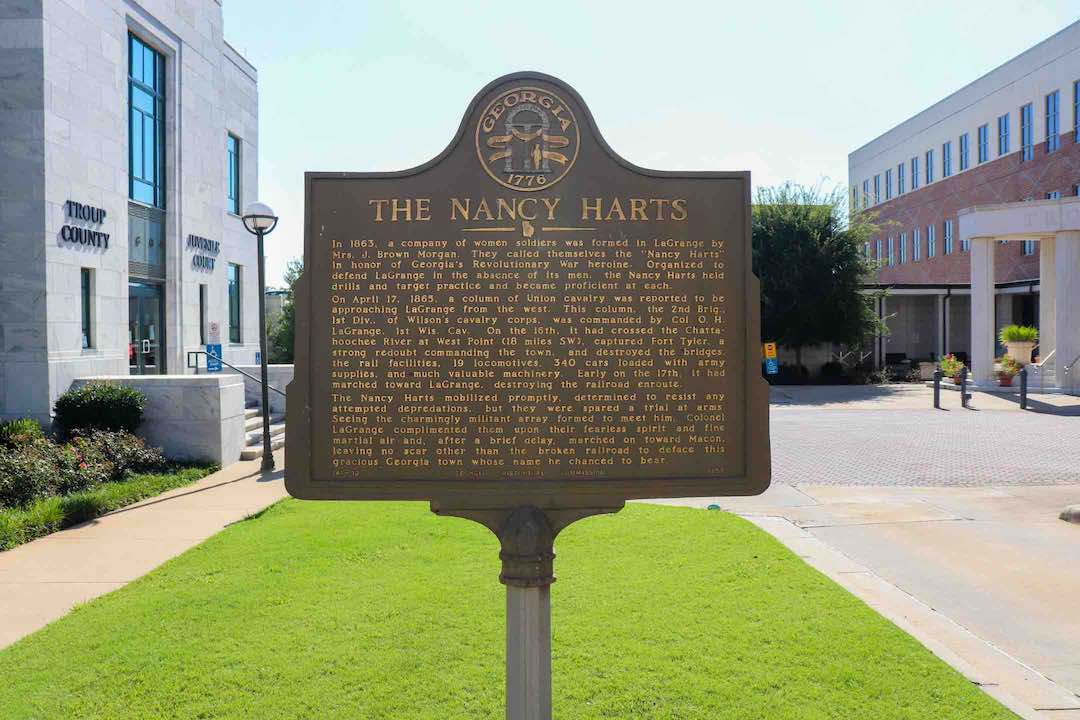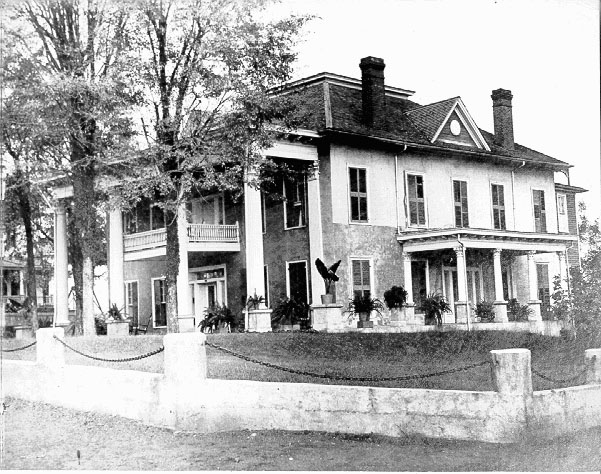The Nancy Harts: The Women Who Kept Watch
In 1861, at the beginning of the Civil War, around 1,300 men from LaGrange left to serve the Confederate Army. One of the wives left behind, Nancy Hill Morgan, realized that the departure of the men from their community left LaGrange particularly vulnerable to Union forces. Left alone in LaGrange along with the other women and children and undeterred by loneliness, Mrs. Morgan decided to turn her emotion into action.
In a little red schoolhouse in Ben Hill’s Grove, near the site of Bellevue, during the second year of the war, Mrs. Morgan held the first meeting for the Nancy Hart militia, a female military company comprised of the women of LaGrange joining forces to protect their homes and the little town they loved.

There were a few major issues to address – none of the women had ever held a gun, most of the working firearms in town left with the soldiers, and uniforms were hard to come by as all of the gray fabric and brass buttons in LaGrange were on the arms and legs of their brothers and husbands. The women wore their skirts in place of military trousers and their floral hats in place of grey ‘Hardee’ hats. The militia gave themselves ranks – Mrs. Morgan was the captain, Mary Alford Heard was chosen to be First Lieutenant, and so on. The militia chose their name in tribute to Georgia’s Revolutionary War Heroine, Nancy Hart, full of equal amounts of gumption and curiosity as her namesakes.
A. C. Ware, a practicing physician in LaGrange who remained home from the war due to a disability, took on the task of acting as their firearms instructor. Using William J. Hardee’s Rifle and Light Infantry Tactics, the women began drilling and practicing their marksmanship. The leaders offered prizes to the best shot, and in due time the women were expert markswomen and became unbothered by the kick of a gun or the smell of gunpowder. As far as the lack of firearms, the town banded together to offer the women rusty, old firearms as weapons.

In 1863, LaGrange turned into a hospital for wounded soldiers and the Nancy Harts took on another hat, going from markswomen to nurses, tending to every suffering soldier they could. Almost every building in town became a working infirmary, all the while the news of Sherman’s approach was thickly hanging in the air.
General Robert E. Lee surrendered on April 9th, but news of the end of the war took time to disperse around the country. On April 16th, nearby Fort Tyler, the “Last Fort to Fall” was attacked by Union troops led by Colonel Oscar La Grange, his name a mere coincidence. With the attack came news of loss for the Nancy Harts, but even with heavy hearts the women continued their routines as normal – drills, then a march through town.
As legend has it, during their routine post-drill march through town the ladies made it to 600 Broad Street where they saw a group of Union soldiers approaching, a moment they had perhaps imagined hundreds of times in their years of training. So, with ruffled skirts and guns on their shoulders, the women stood their ground.
It is unclear what kind of parlay took place between the Nancy Harts and the Union soldiers, but influenced by a kind motive of some fashion, Colonel La Grange was moved to place guards around the homes of the city to protect them from going up in flames like those in neighboring towns. Buildings in town that helped the war cause – a tannery and warehouses housing supplies were destroyed, and as mothers, wives, and sisters, the Nancy Harts waited devastatingly in a singed and sorrowful town for soldiers that never returned. While parts of LaGrange were nearly unrecognizable, the Union soldiers never touched their homes.

In their uniforms of ruffled skirts, the Nancy Harts kept watch over LaGrange for four years. And while they were never called to active military duty, they accomplished their very purpose – defending their homes from destruction. Over time several of the Nancy Harts fell for Union soldiers and even Colonel La Grange himself was won over by a southern belle. While the country was divided and reeling in the aftermath of war, in a little corner of Georgia, enemies turned into family.
A special thank you to Shannon Gavin Johnson and Lewis Powell at the Troup County Archives. Information referenced from the November, 1904 issue of Ladies Home Journal; “The Story of The Nancy Harts”.